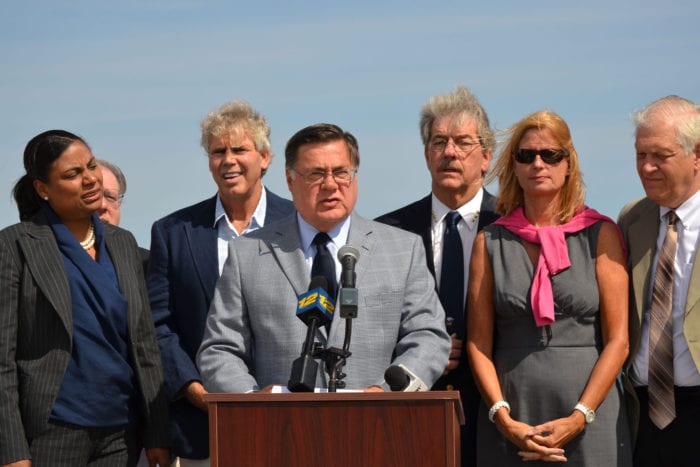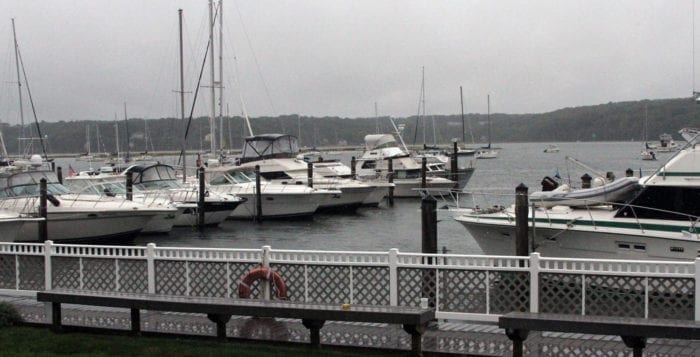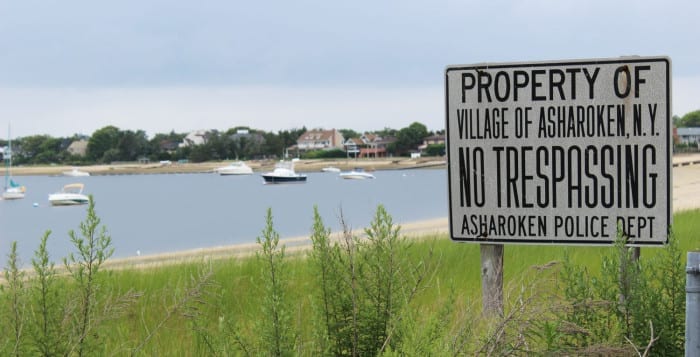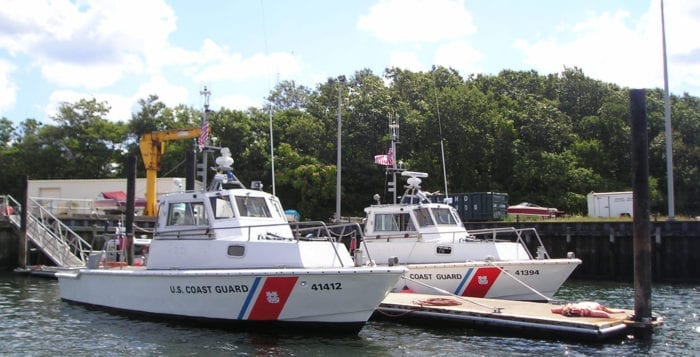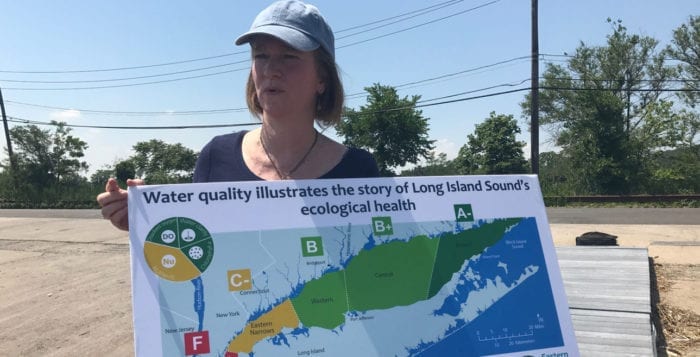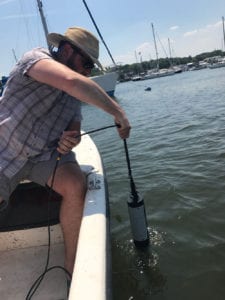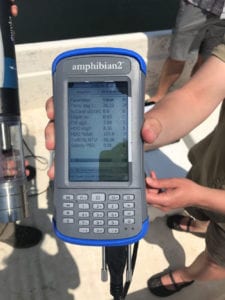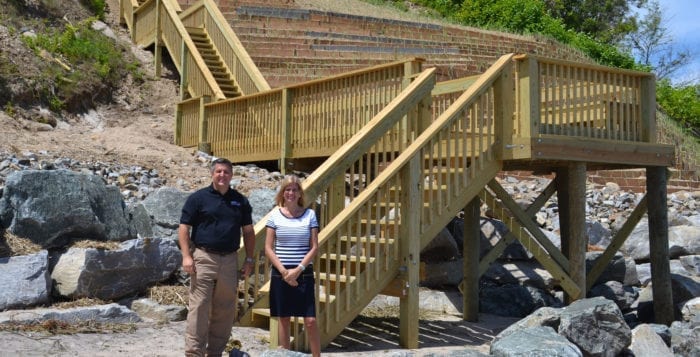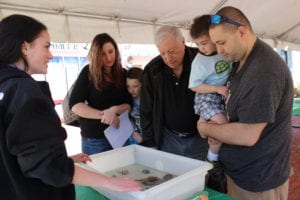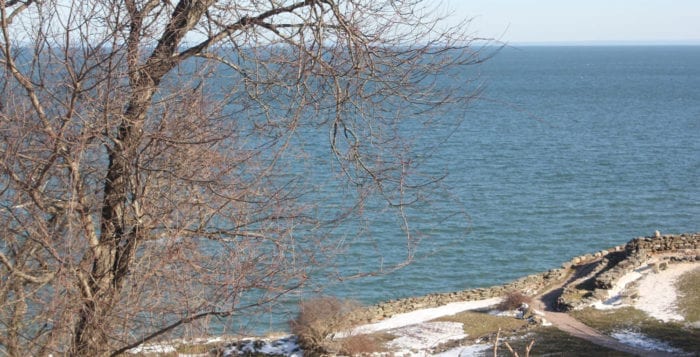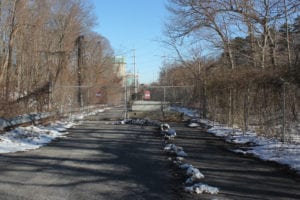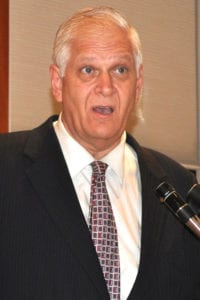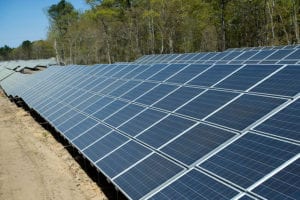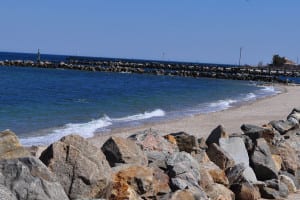By Alex Petroski
New York State Gov. Andrew Cuomo (D) is picking a fight with the federal government, and as of Aug. 28, he officially has backup.
Brookhaven Town Supervisor Ed Romaine (R), joined by town board members, environmentalists and State Assemblyman Steve Englebright (D-Setauket), announced the town’s support of a lawsuit filed by New York Attorney General Eric Schneiderman Aug. 17 against the United States Environmental Protection Agency regarding the open dumping of dredged materials in the Long Island Sound. The lawsuit alleged the Long Island Sound Dredge Material Management Plan, which was approved by the EPA, violates the Ocean Dumping Act and Coastal Zone Management Act, and also cited a “failure to address environmental impacts on the Long Island Sound.”
“The state of New York and this governor, Andrew Cuomo, has done a great service to this state and to the residents of Long Island by working to enjoin, in the court, the EPA from allowing continued dumping in the Sound.”
—Ed Romaine
In 2016, the EPA increased the number of open water dumping sites in the Sound from two to three, despite a call from state government leaders of both New York and Connecticut in 2005 to reduce and eventually eliminate the practice of dumping in the Sound. According to the suit, the dumping is also inconsistent with several investments of taxpayer dollars and policies that have sought to clean up the vital Long Island waterway. Cuomo opposed the additional dumping site in late 2016, and Romaine and the town sent a letter to the governor in support of legal action against the federal agency.
“We’re here to send a very strong message — that we are opposed to dumping in the Sound,” Romaine said during a press conference Aug. 28 at Cedar Beach in Mount Sinai. “The state of New York and this governor, Andrew Cuomo, has done a great service to this state and to the residents of Long Island by working to enjoin, in the court, the EPA from allowing continued dumping in the Sound.”
Romaine accused the EPA of taking the expedient course of action rather than the most environmentally sound course with dredged materials, some of which are contaminated by pollutants.
Though a spokesperson for the EPA declined via email to comment on ongoing litigation, an April 2016 statement from the agency spelled out the motivation for continued dumping in the Sound.
“Dredging is needed to ensure safe navigation in the sound,” EPA spokesman John Martin said in an email to Times Beacon Record Newspapers. He added the agency felt the proposal struck “an appropriate balance between the need for dredging to maintain safe and efficient navigation and our desired outcome to restore and protect Long Island Sound.”
Kevin McAllister, the president of Defend H20, a nonprofit organization dedicated to defending and restoring the quality of Long Island’s waterways, spoke in support of the town and the governor during the press conference.
“We’re spending billions of dollars on water quality improvements and the open water dumping of contaminated silt flies in the face of these efforts.”
—Kevin McAllister
“As a federally designated Estuary of National Significance, Long Island Sound is in need of greater protection,” he said. “We’re spending billions of dollars on water quality improvements and the open water dumping of contaminated silt flies in the face of these efforts.”
Representatives from the nonprofits Sierra Club Long Island and the Setauket Harbor Task Force also pledged support in opposition of the dumping plan.
Englebright offered a suggestion for an alternative to the continued dumping in the Sound.
“It is ironic that at a time when we’re watching a terrible hurricane devastating the great state of Texas and reflecting on the reality that sea level is rising, that the federal government is proposing to take a vast amount of sediment that will be needed to bulwark our coastal investments, our coastal communities from a rising sea level to augment our beaches with that sediment, to take it instead and use it in the most harmful possible way,” Englebright said. He added the dumping is “radicalizing the ecology” of the waterway, saying the sediment could be needed and should be used to strengthen coastlines. Englebright cited a deadly 1953 storm in the Netherlands that inspired the same fortification he proposed, a practice that nation has continued since.
Brookhaven Town Council members Valerie Cartright (D-Port Jefferson Station) and Jane Bonner (C-Rocky Point) also voiced support of the lawsuit. Romaine said he had been in contact with 1st Congressional District U.S. Rep. Lee Zeldin (R-Shirley) regarding the town’s support of the lawsuit, and Romaine said the congressman is strongly opposed to dumping in the Sound.
Zeldin has sponsored and supported bills designed to improve the health of the Sound in the past and has opposed long term dumping at the designated sites.
“The Long Island Sound shouldn’t be a dumping ground, especially when there are many viable alternatives to open water dumping, including recycling and safe disposal on land,” Zeldin said in an emailed statement through spokeswoman Jennifer DiSiena.
This post was updated to include comments by Lee Zeldin.

